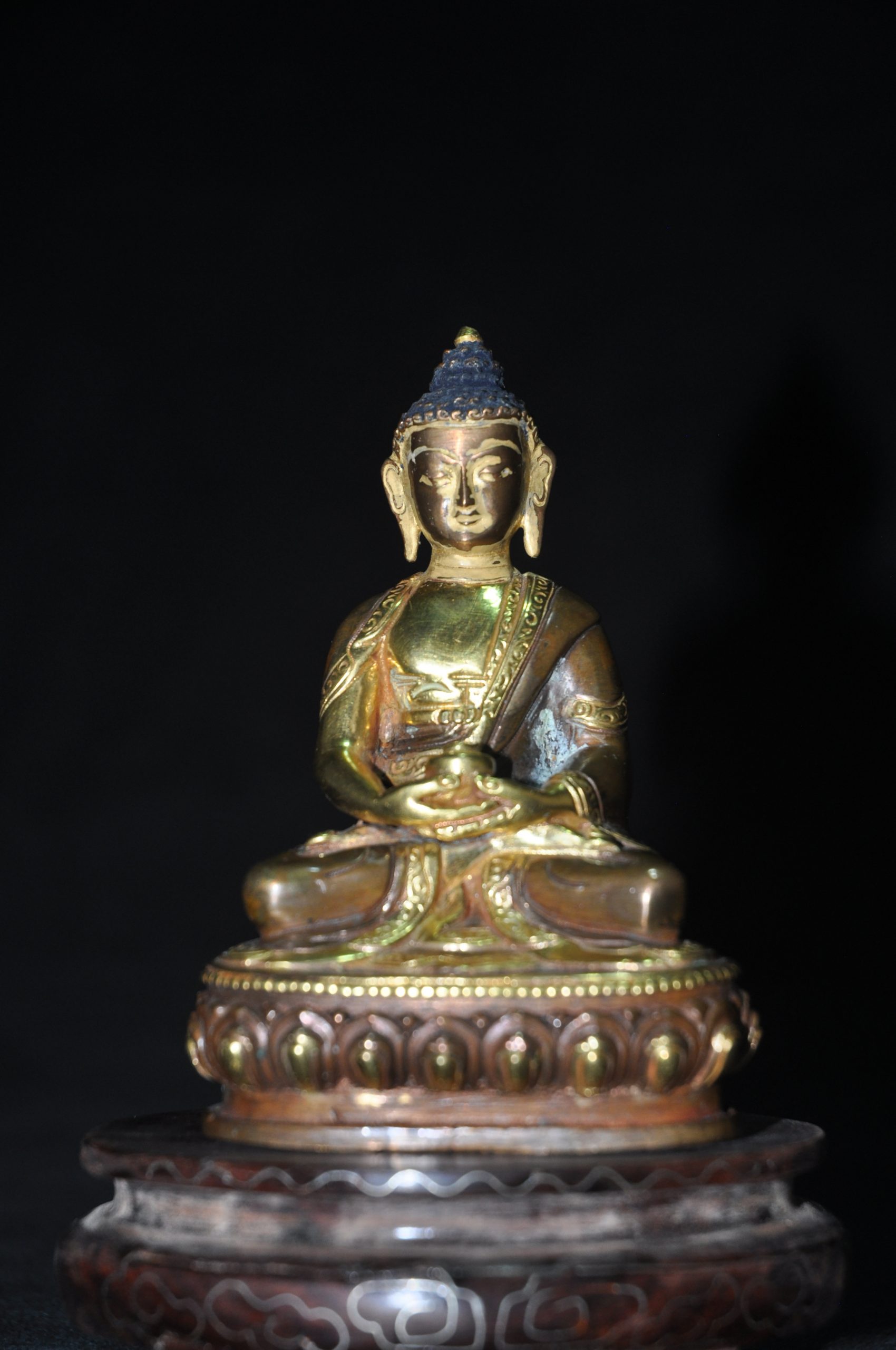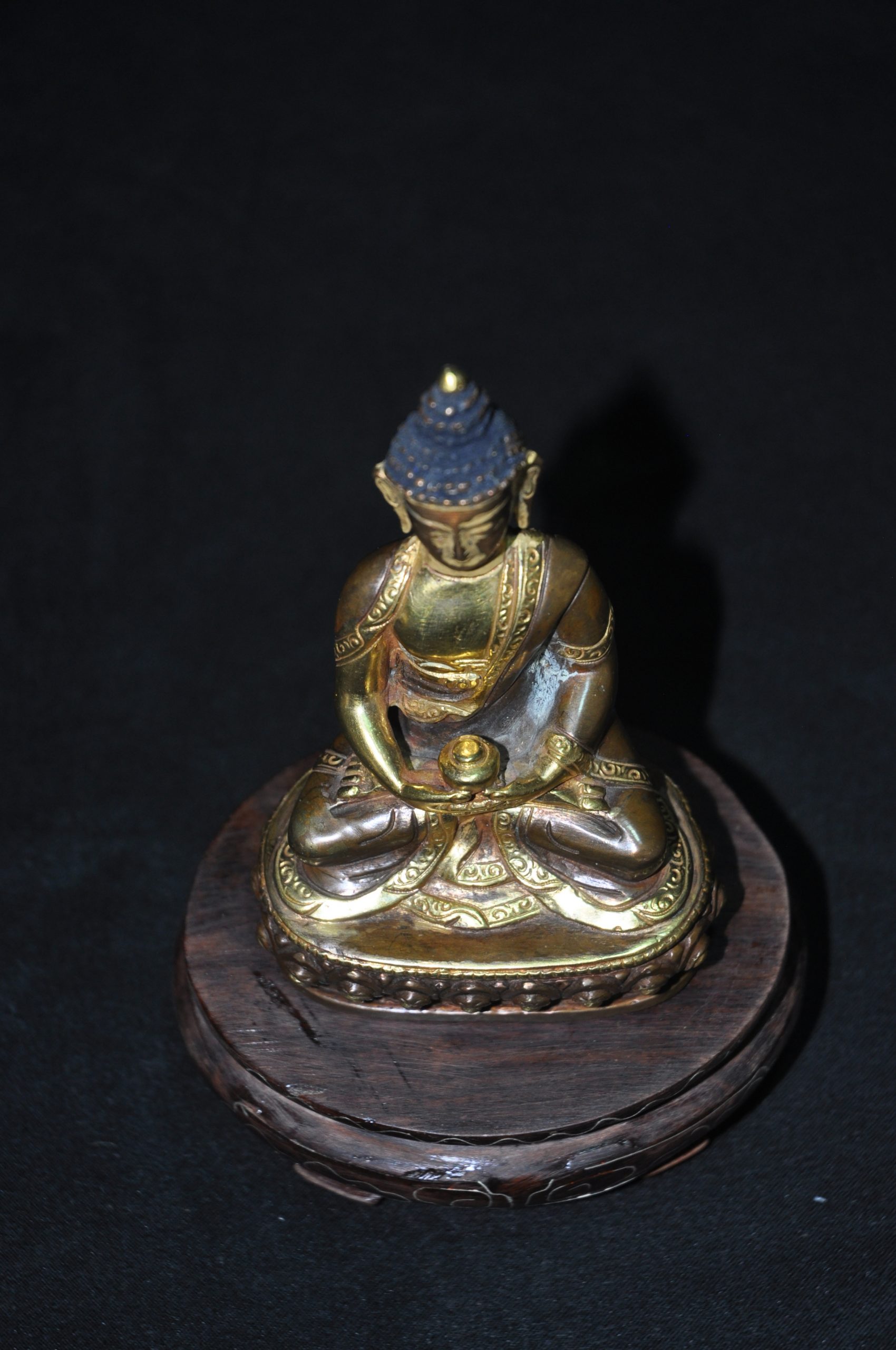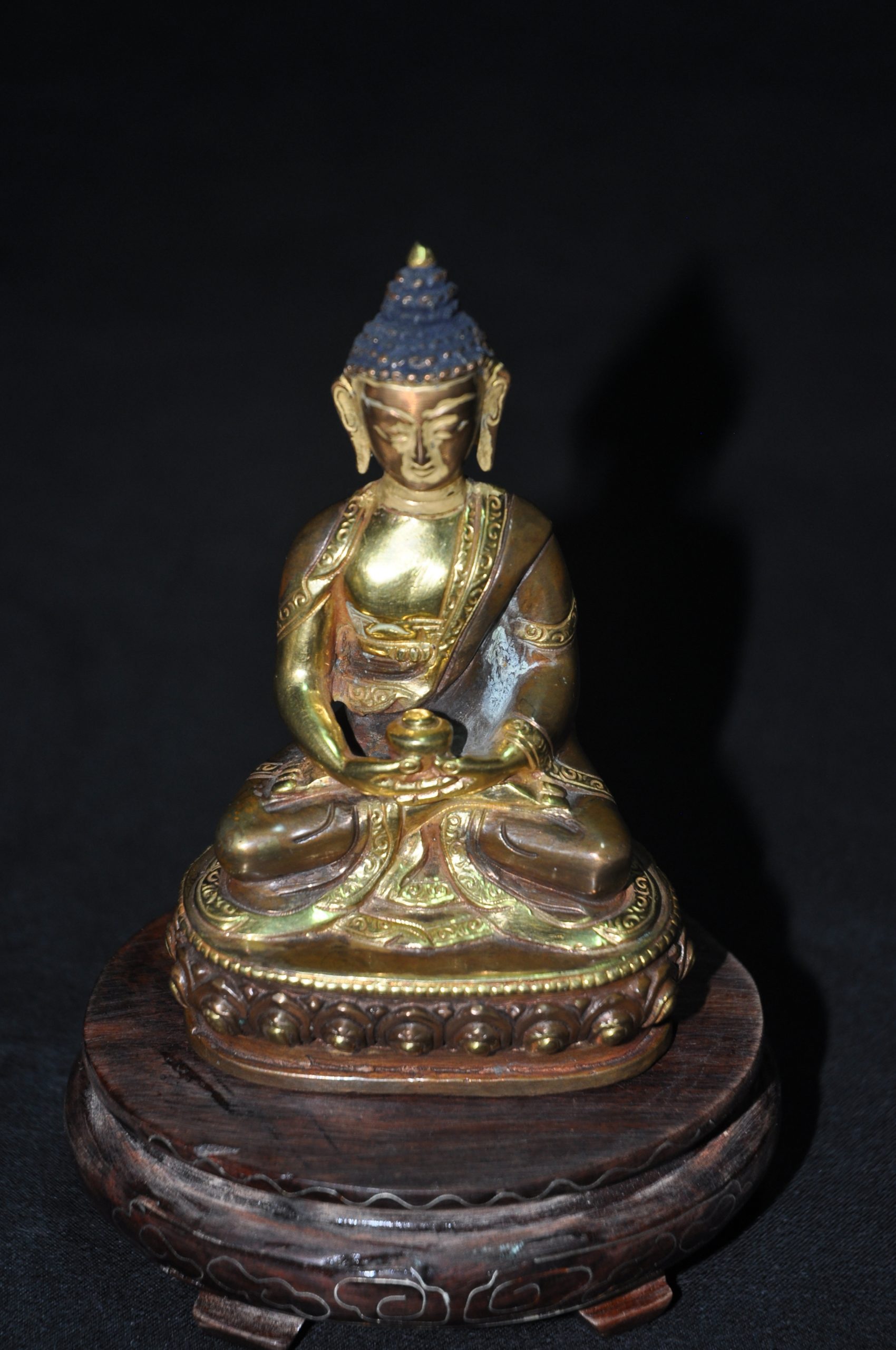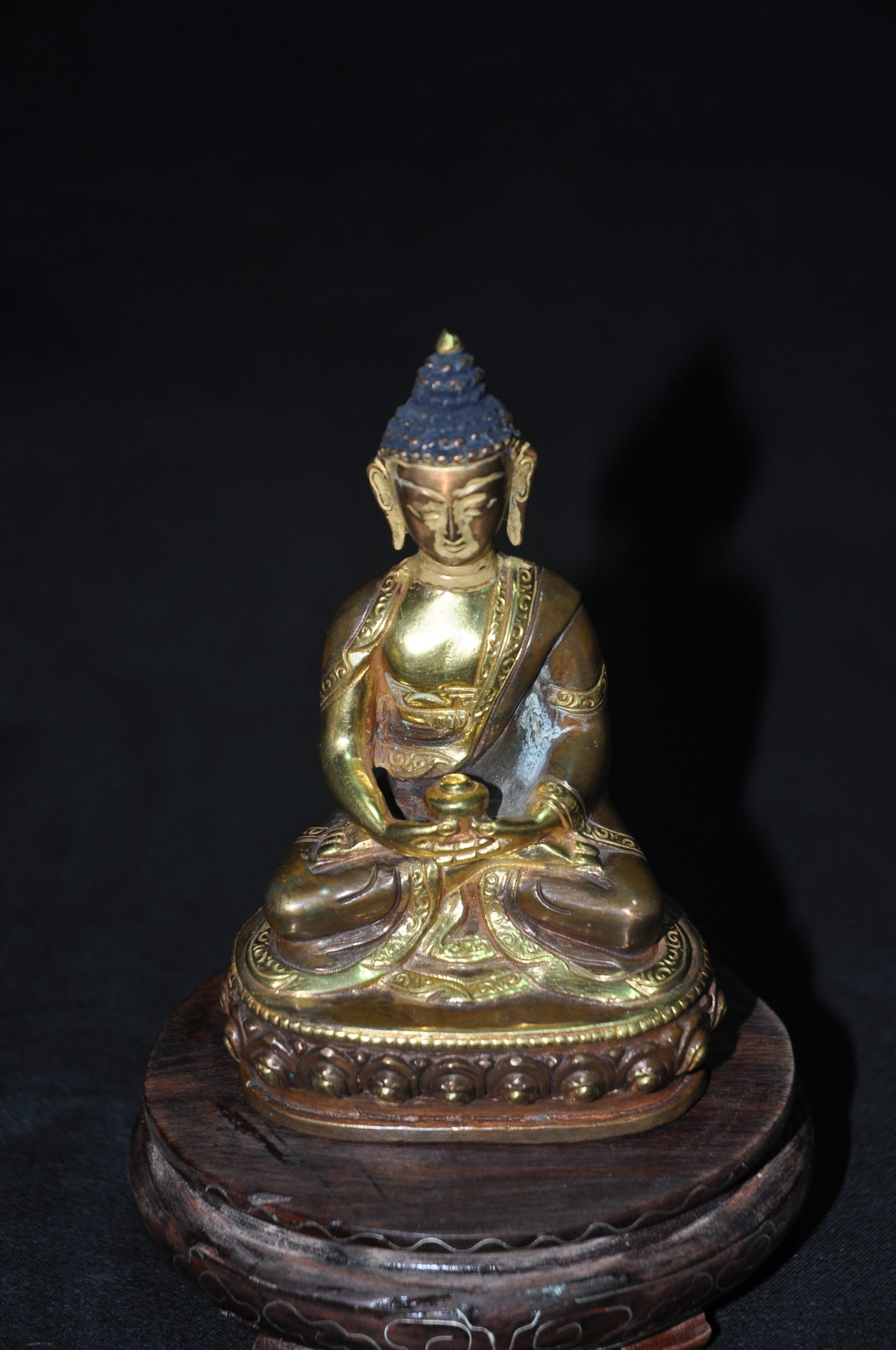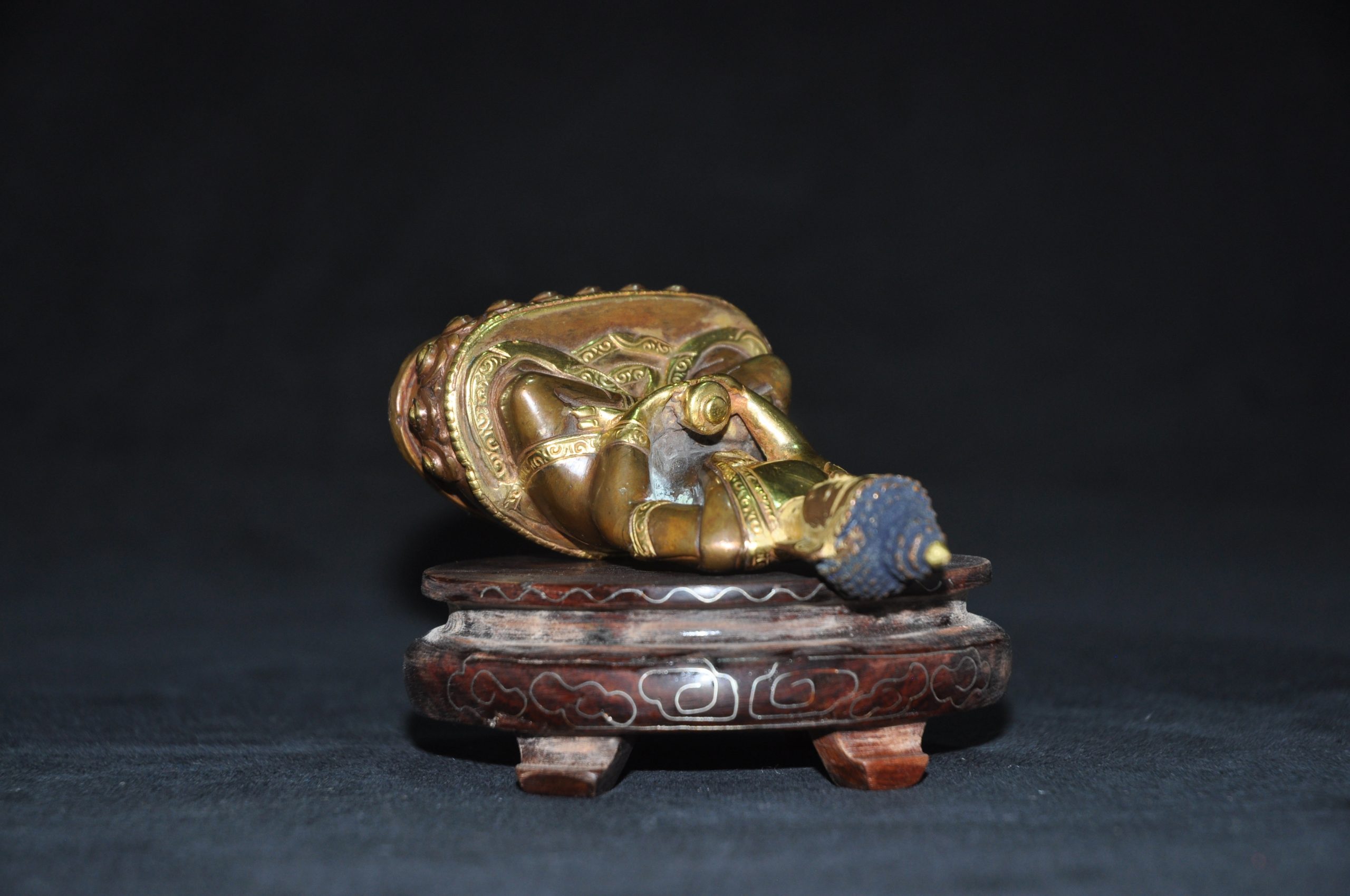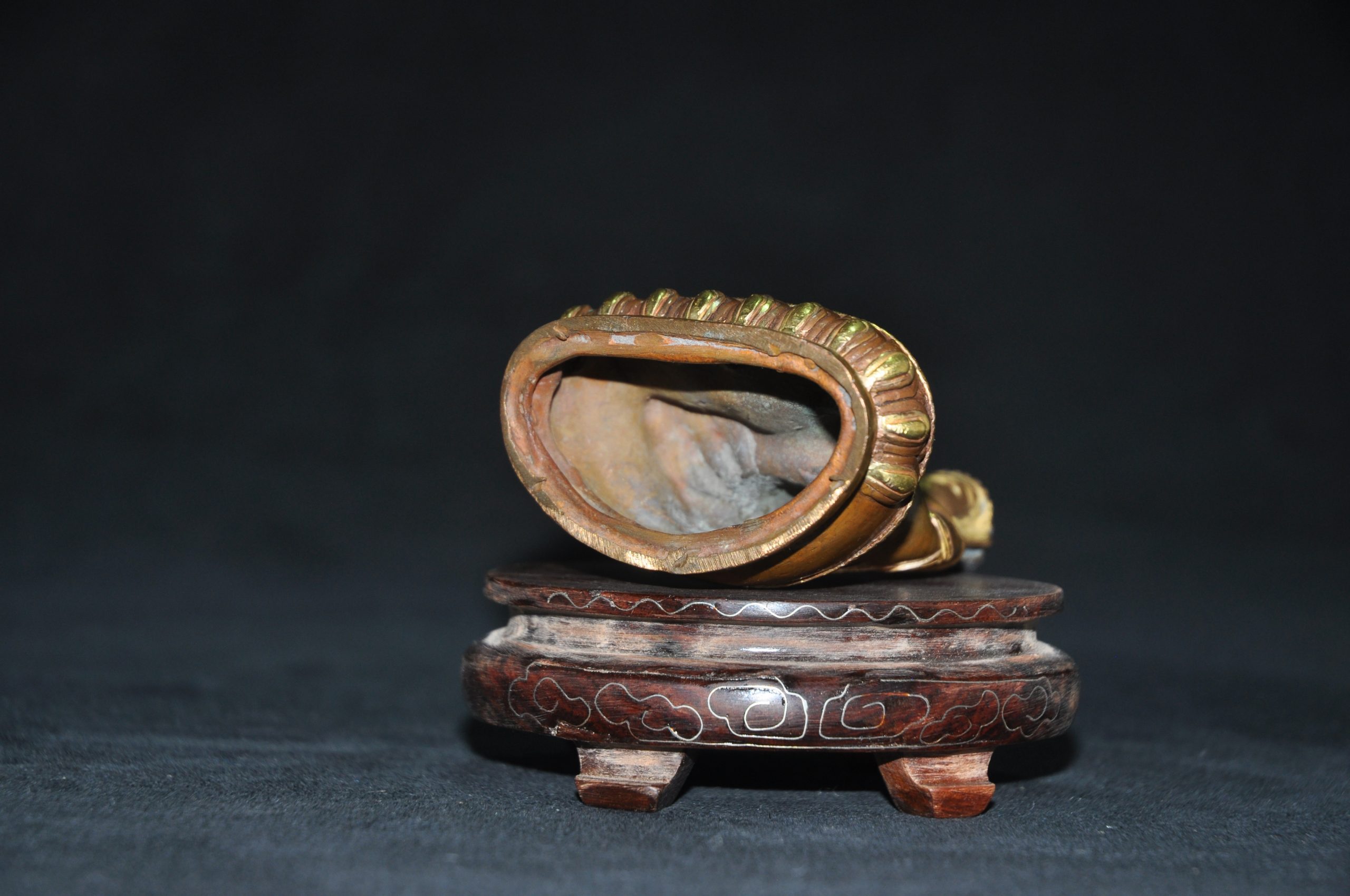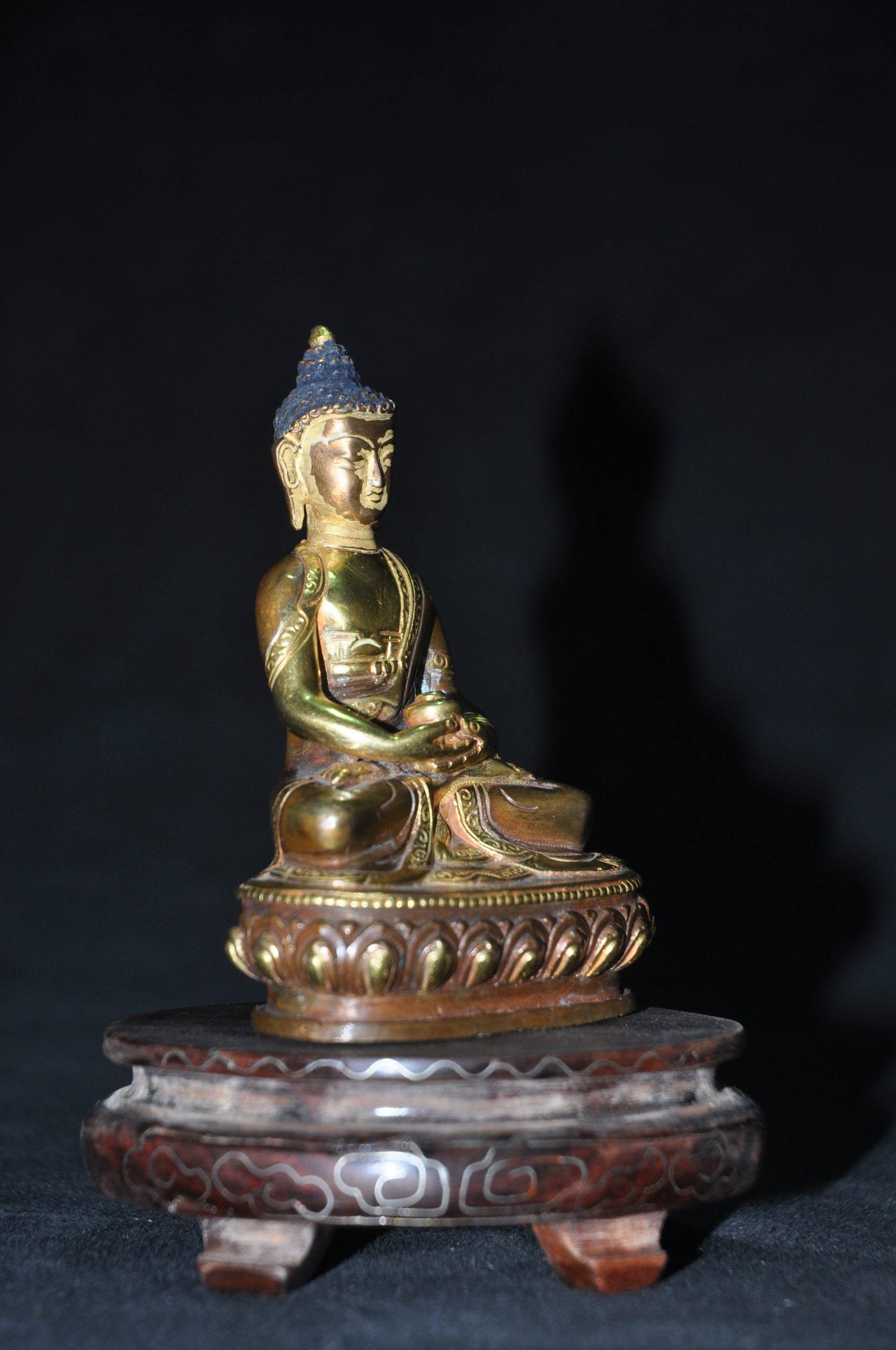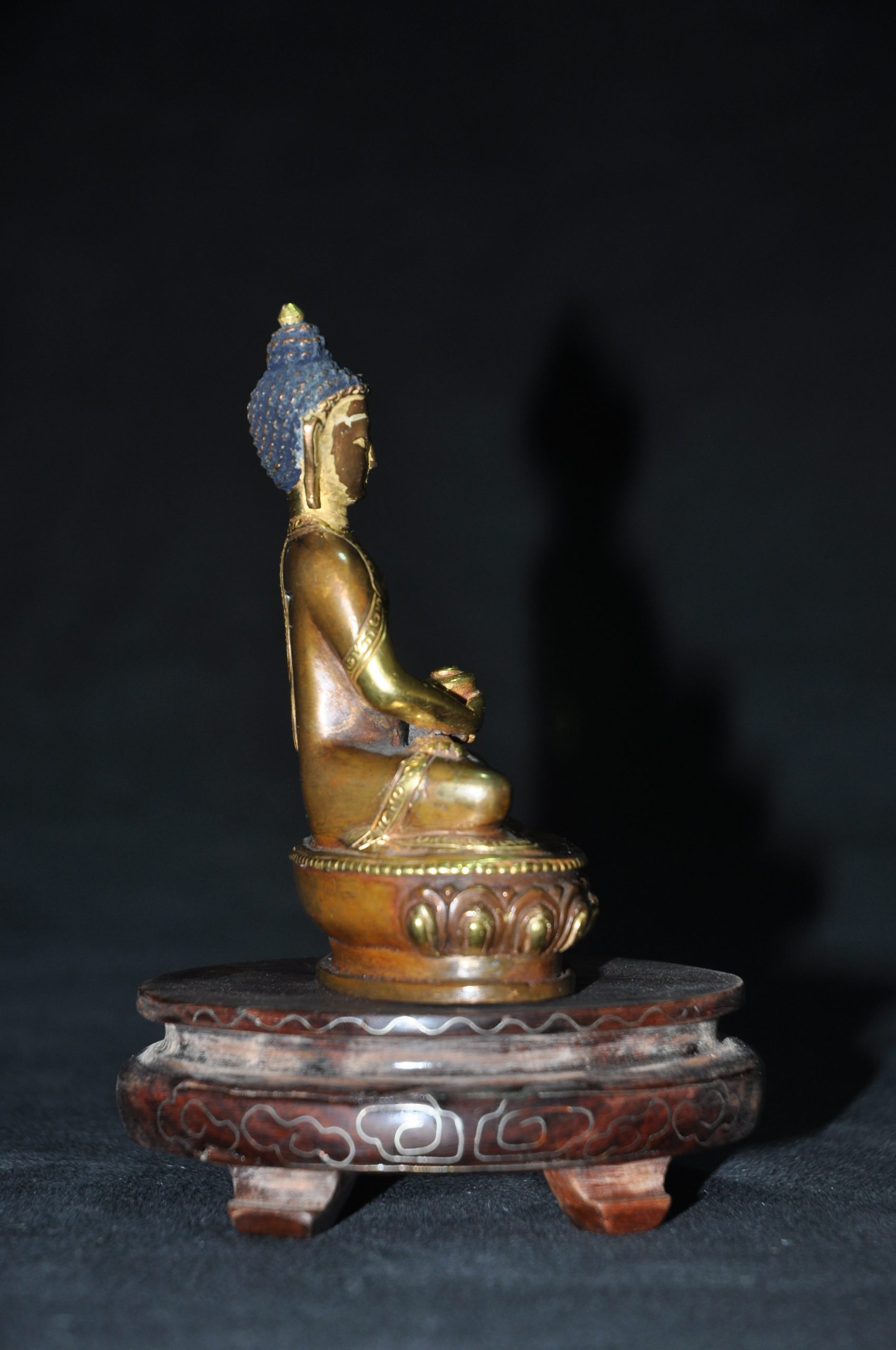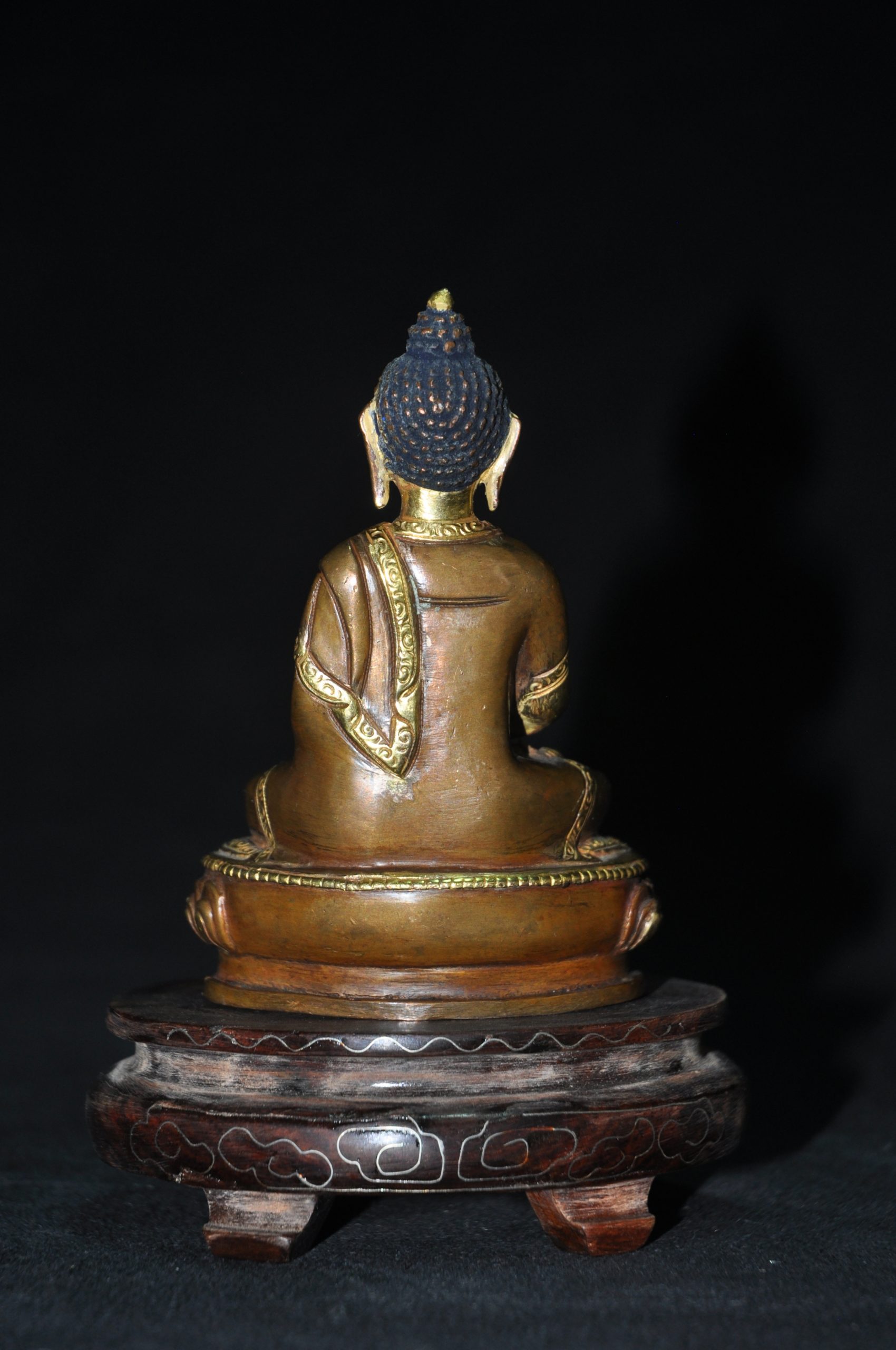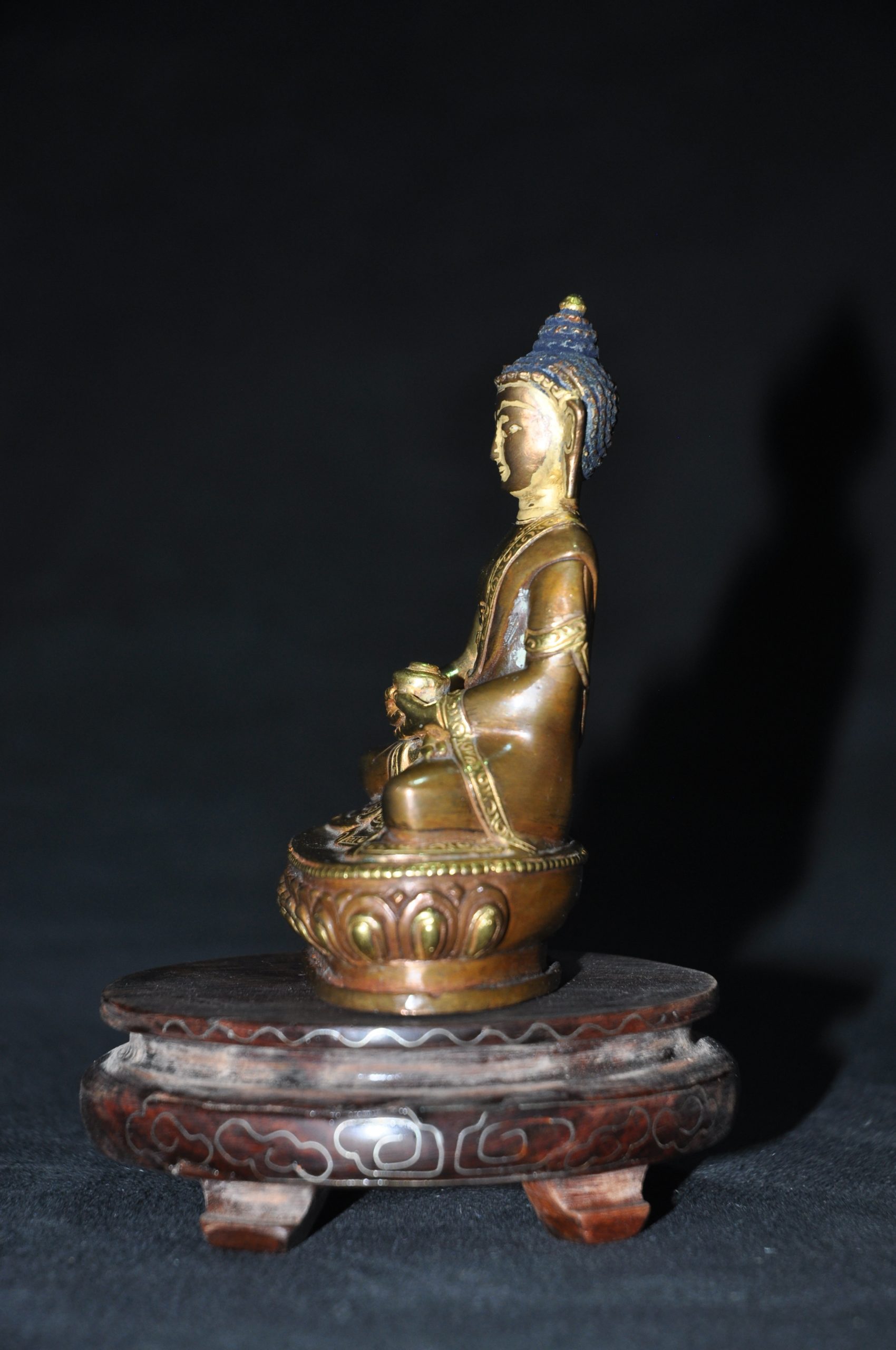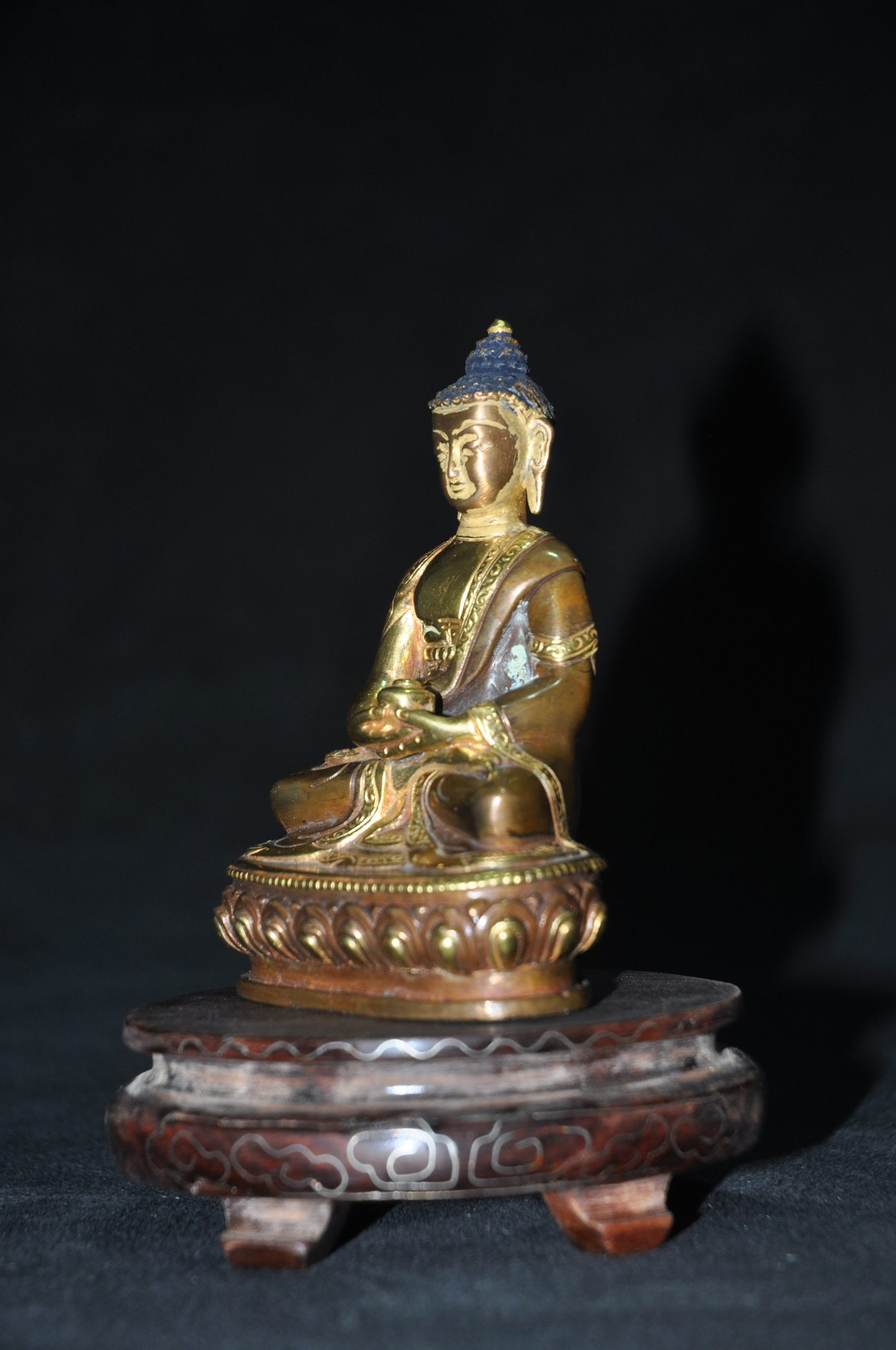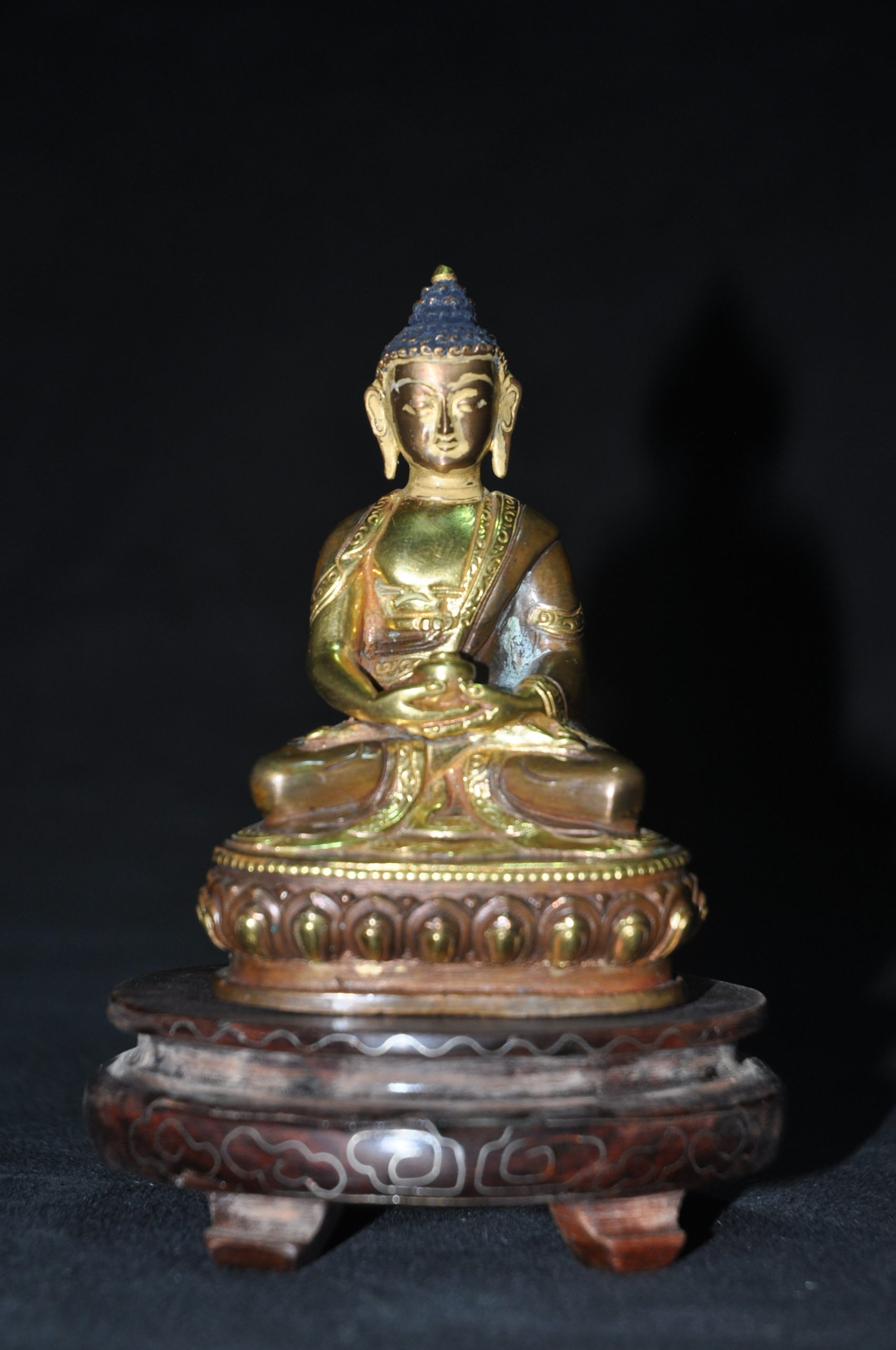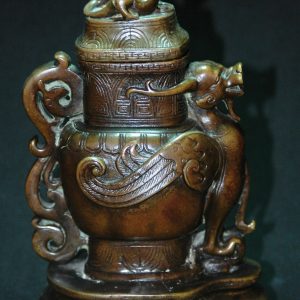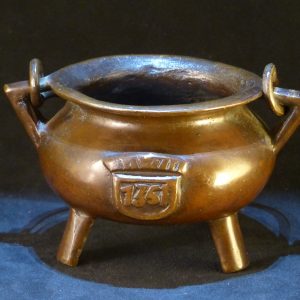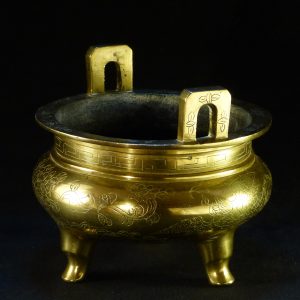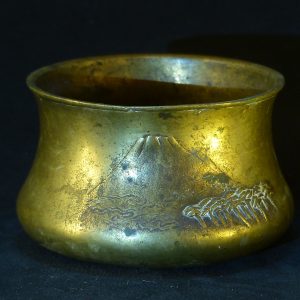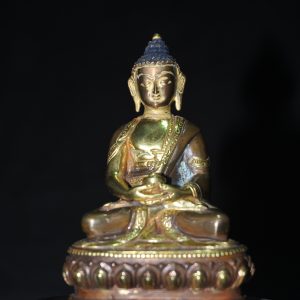Description
参考: 西泠印社2021年春季拍卖会
华藏宝相 · 历代造像艺术专场
Lot.2935 十四世纪 铜鎏金药师佛坐像
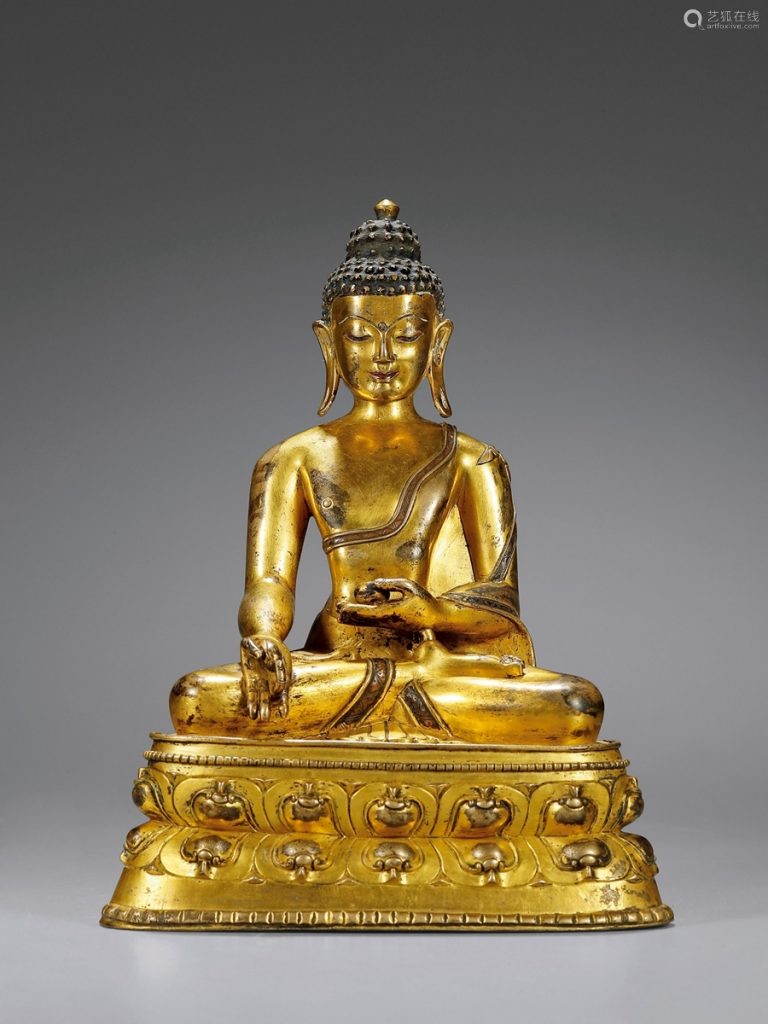
Estimate CNY 200,000 ~ 300,000
Size高24.3cm
Description
药师佛全称『药师琉璃光如来』,亦称『大医王佛』、『医王善逝』等,据《药师经》说,他曾发十二大愿,为众生医治病苦,消灾延寿,藏语称『曼拉』,是东方净琉璃世界的教主,是以持诵念佛为众生解脱之方便法门。众生只要念他的名号,就可以不入畜门、地狱恶道。他能除病祛痛,救治病患,故名药师佛。药师佛的显著特点是左手托钵于胸前,钵中有一吉祥草;右手舒垂,或拈有一莲花,或持一药丸。。此尊药师佛通体鎏金,头饰螺发,发髻高耸,宝珠顶严。面相端庄,弯眉细目,双目俯视前方,神态慈祥亲切。宽肩束腰,躯体挺直,体态匀称。手脚刻划细腻写实,柔软而富有弹性。上身着袒右肩式袈裟,左肩敷搭袈裟边角,富有装饰性。袈裟轻薄贴身,且在衣缘处嵌以红铜。束腰仰覆式莲花座,上下缘饰两圈连珠纹,莲花瓣宽大饱满,排列规整,做工精细,时代特征鲜明。整像工艺精湛,制作考究,体量巨大,展现出雄壮的雕塑之美,为13-14世纪前后西藏地区造像的上乘之作,应出自于西藏大型寺院之手,并作为珍品而供奉。此尊佛像虽然造型简单,但体量较大,对于艺术家的要求也相对较高,其简洁的艺术造型也最能表现雕塑艺术水平,最好表现佛教的精神与思想,最能展现佛教艺术的魅力,在近年以来的拍卖市场上尤受追捧。
参考:浙江世贸
2021浙江世贸春季艺术品拍卖会
道入匠心—文房清玩·佛像
Lot.222 明代 铜鎏金药师佛
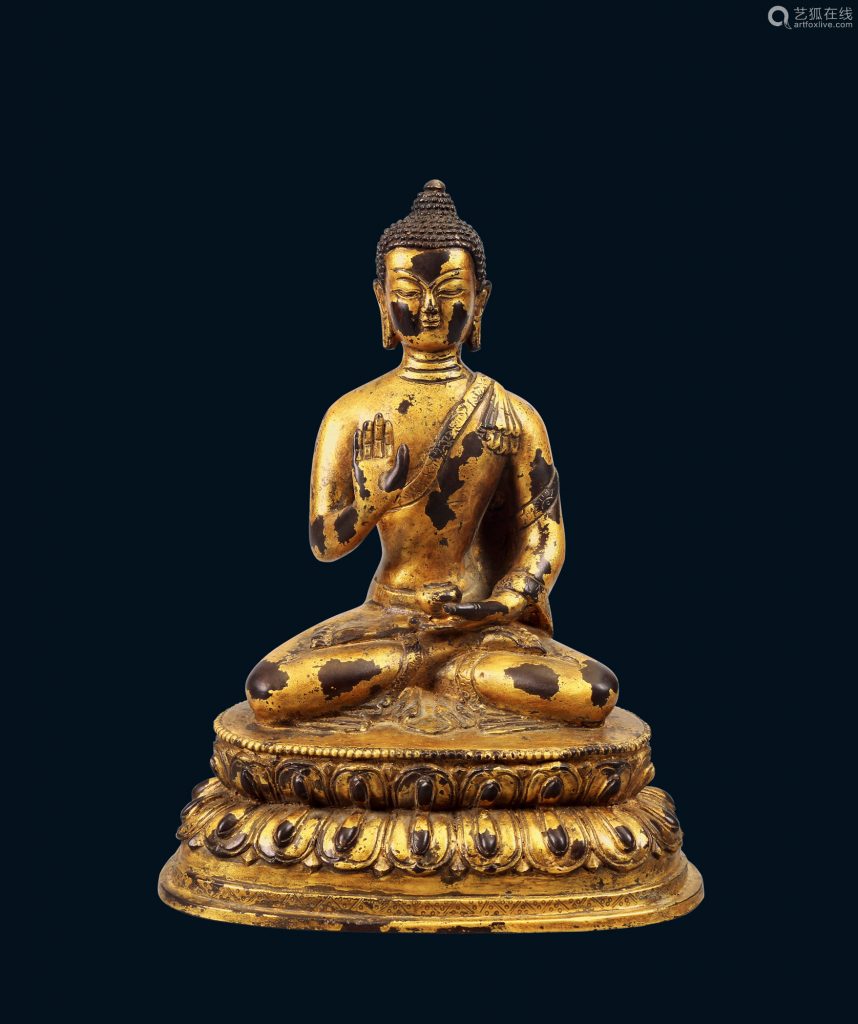
Estimate CNY 60,000 ~ 80,000
Size 底17cm×11.5cm;高22cm
Description
材质:佛像 药师佛,全称「药师琉璃光如来」,又称「药师如来」。他能除生死之病,故名药师;能照三有之暗,故名琉璃光。药师佛来源于《药师本愿功德经》记载:「佛告曼殊师利(文殊菩萨),去此东方,过十殑伽佛土,有世界名净琉璃,佛号药师琉璃光如来,是东方净琉璃世界的教主。」据《药师本愿功德经》记载,药师佛为因地菩萨时,曾发十二大誓愿,表示成佛后要救度一切众生。通过累劫的修行,药师佛终于达成所愿,修成正果。
参考:佳士得 現場拍賣 3484
般若妙相:虔誠信仰藝術精品
Property from a Private American Collection
19 3月 2014
明永樂 銅鎏金藥師佛坐像 「大明永樂年施」單行刻款
CHINA, MING DYNASTY, YONGLE SIX-CHARACTER MARK INSCRIBED IN A LINE AND OF THE PERIOD (1403-1425)
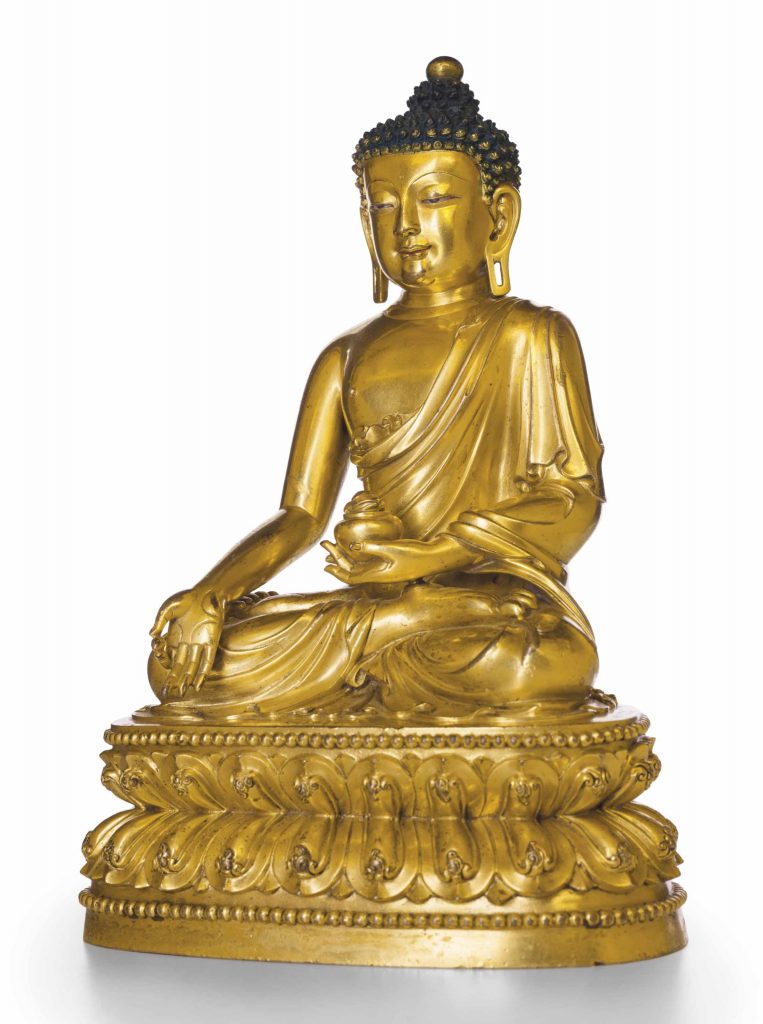
成交價 USD 5,541,000
估價 USD 2,000,000 – USD 3,000,000
細節
明永樂 銅鎏金藥師佛坐像
「大明永樂年施」單行刻款
來源
Private collection, Europe, acquired before 1948.
Christie’s Hong Kong, 29 April 2002, lot 541.
拍品專文
The jar held in the left hand identifies this magnificent figure as the Buddha of Medicine and Healing (Sanskrit, Bhaishajyaguruvaiduryaprabharaja; Chinese, Yaoshifo). Colloquially called the Medicine Buddha, he is considered a healer who alleviates suffering and offers solace to the afflicted through the medicine of his teachings.
The eponymous Bhaishajyaguruvaiduryaprabharaja Sutra, generally called the Medicine Buddha Sutra in English, describes Bhaishajyaguru as a bodhisattva who made twelve great vows. On achieving full enlightenment, he became the Buddha of the Eastern Pure Land of Vaiduryanirbhasa, or “Pure Lapis Lazuli.” There, he is attended by two bodhisattva symbolizing the light of the sun and of the moon, respectively: Suryaprabha (Chinese, Riguang Bianzhao Pusa) and Chandraprabha (Chinese, Yueguang Bianzhao Pusa).
According to the Medicine Buddha Sutra, the twelve great vows that Bhaishajyaguru made on attaining full enlightenment are:
To illuminate countless realms through his radiance, enabling anyone to become a Buddha
To awaken the minds of sentient beings through his lapis lazuli light
To provide sentient beings with whatever material needs they require
To correct heretical views and inspire sentient beings to follow the
path of the bodhisattva
To help beings follow the Moral Precepts, even if they previously failed in such attempts
To heal beings born with deformities, illnesses or pain
To relieve the destitute and the sick
To assist women who wish to be reborn as men achieve their desired rebirth
To heal mental afflictions and delusions
To free the oppressed from suffering
To relieve those who suffer from severe hunger and thirst
To clothe those who are destitute and suffering from cold and mosquito bites
Mahayana Buddhism, the predominant form in traditional China, teaches that there are an infinite number of Buddhas, all of whom are deities. The most popular Buddhas, and thus the most frequently portrayed, are Shakyamuni (the Historical Buddha), Amitabha (the Buddha of Infinite Light) and Bhaishajyaguru (the Medicine Buddha).
According to traditional iconographic conventions, the lapis-colored medicine jar that Bhaishajyaguru holds in his left hand contains nectar from the myrobalan fruit. Extended over his right knee, his right hand forms the varadamudra, or gift-giving gesture, and holds a single myrobalan fruit between thumb and index finger.
Although Tibetan Buddhist imagery began to appear in the repertory of Chinese art already in the Yuan dynasty (1279-1368), Tibetan influence on Chinese Buddhist art became far more pronounced in the Ming dynasty (1368-1644), particularly during the Yongle era (1403-1425), when the imperial court looked favorably upon Buddhism and made a concerted effort to build secular and religious alliances with Tibet, even inviting Tibetan monks to the capital, Beijing, to conduct religious services. In images of bodhisattvas, such Tibetan influence manifests itself in the sensuous presentation of the deity, but in images of the Buddha it is apparent in the globular jewel on top of the ushnisha, the relatively square face, the forward-turning ears, the full fleshy cheeks that frame the shallow concave depression that includes the small mouth, which is set in a subtle smile, the refined gestures, the abundant and meticulously rendered details, and the compressed double-lotus base. All of these stylistic characteristics are visible in the present figure as well as in the similar figure of Shakyamuni Buddha, in the British Museum, which is also inscribed with a Yongle reign mark, illustrated by Sheila C. Bills in “Bronze Sculptures of the Early Ming (1403-1450): Tibet in China, China in Tibet,” Arts of Asia, (September-October 1994): p. 84, nos. 20/21. As important as Tibetan-influenced works of art were early in fifteenth-century China, particularly in the reigns of Yongle and Xuande (1425-1435), Tibetan-style Buddhism probably was little practiced outside the imperial court, so most such images were made for the court, as indicated by the imperial inscriptions.
参考:北京博美国际拍卖有限公司
北京博美2017年春季拍卖会
《慈眸望众生》—古代佛造像专场
LOT 0794 18世纪 铜鎏金错银药师佛坐像
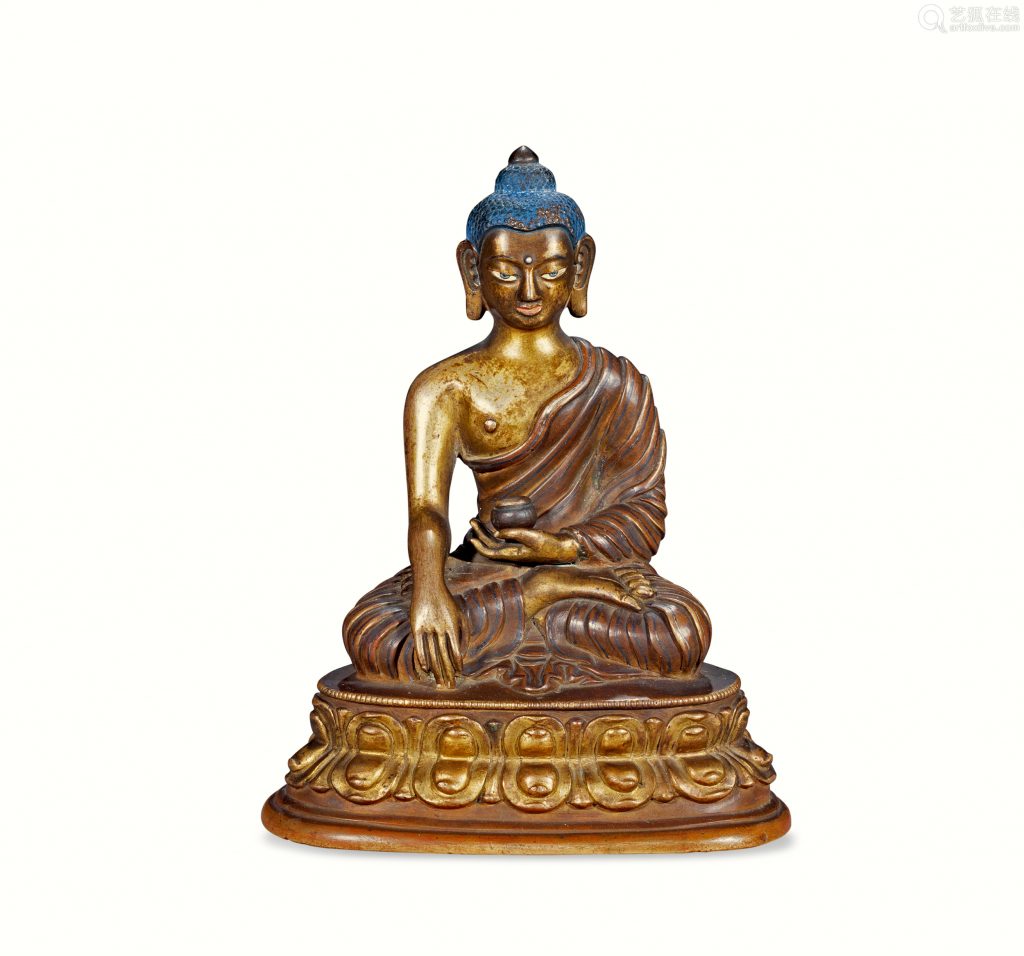
起拍价 CNY180,000
估价 CNY 180,000 ~ 280,000
尺寸 高15.8cm
拍品描述
来源:日本宝古堂美术馆旧藏
说明:此尊药师佛身躯挺拔,肢体比例把握准确,表现出极高的造型功力。靛蓝的螺发排列规整,顶部肉髻圆凸,宝珠顶严,大耳垂肩,给人以慈祥睿智之感。面部脸颊丰满,双目微阖,直鼻小口,唇角含笑,眉间白毫突显,双眉细长,显得格外俊朗。双腿结全跏趺坐,左手置腹前结禅定印托钵,这是药师佛形象的重要标识,右手垂于膝前结触地印,手指刻画柔软生动。身着袒右式袈裟,下承仰覆式双层莲,沉稳宽大,上缘一道连珠纹细密整齐,下缘两层平行弦纹,极为精致美观。整尊造像沉稳大气,手感厚重。保有原封底,更显殊胜。|药师佛,全称“药师琉璃光如来”,又称“大医王佛”、“医王善逝”等。佛教典籍中说,他是东方净琉璃世界的教主。曾发十二誓愿,为众生消除痛苦、求得安乐。|这尊药师佛法象庄严,品相十分完整,令人叹为观止,佛头、眉、眼、唇彩绘,色彩鲜艳;十分难得的是,肉身及莲瓣均以鎏金,光鲜亮丽;袈裟纹理及衣缘均均以错银丝工艺描绘;从整体风格来看这尊佛像出自乾隆宫廷无疑。
参考:西泠印社
2016年秋季拍卖会
华藏宝相·历代造像艺术专场
3739 清·蒙古扎派铜鎏金药师佛
QING DYNASTY A GILT-BRONZE MONGOLIAN STATUE OF BHAISAJYAGURA
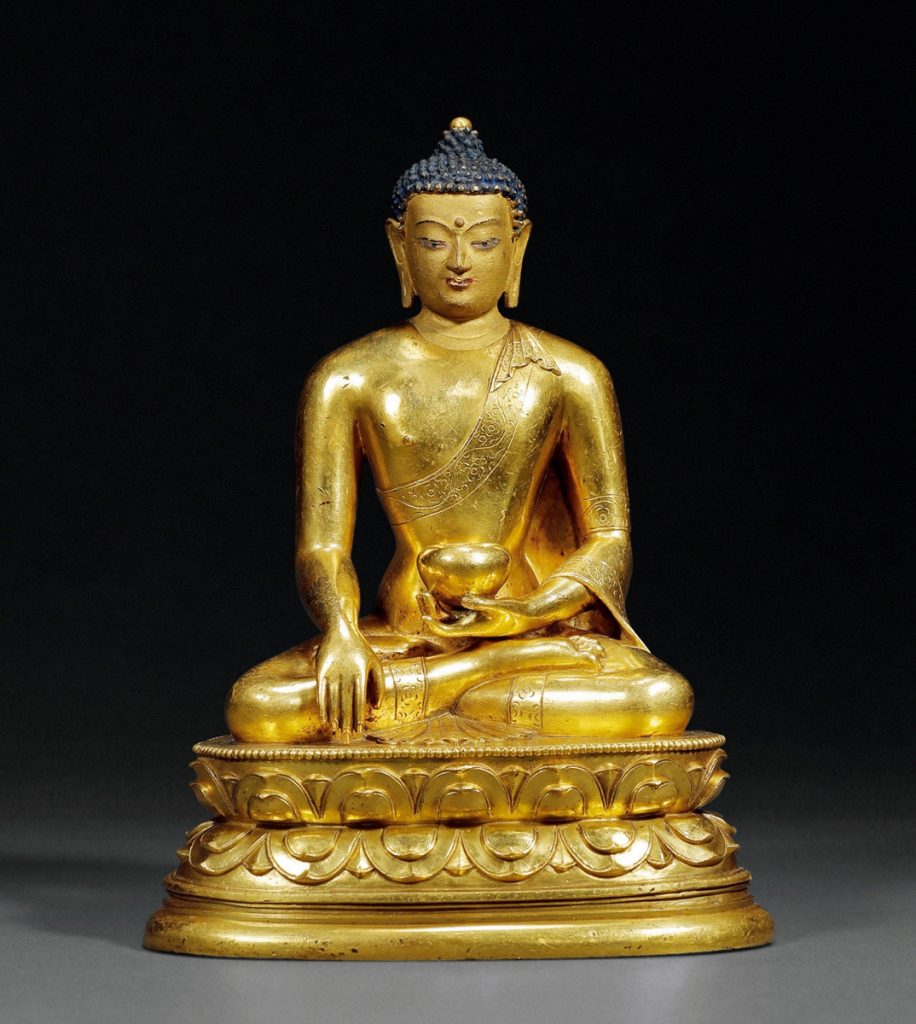
估价RMB: 200,000-250,000
成交价RMB: 253,000(含佣金)
高:21cm
药师佛,又作药师如来、大医王佛、医王善逝、十二愿王,为东方净琉璃世界之教主。佛教中讲,常修持供奉药师佛,可以去除疾苦,消灾延寿。此尊造像左手结禅定印托钵,右手施与愿印,为标准的药师佛像。此尊面容端庄静谧,肩胸圆润宽厚,腰部细敛。身着袒右式袈裟,左肩覆搭衲衣边角,仅在衣缘錾刻花纹。衣纹极薄,或者可以说接近没有衣纹似的贴体薄衣,肩膀和胸部魁梧,跏趺端坐。束腰台座的莲瓣交错排列,底边呈卷唇状。整像造型简洁明快,端正中不失纤巧,应是清代蒙古造像之精品。

![[临渊阁]天地一家春](https://www.antiquekeeper.ca/wp-content/uploads/2023/03/cropped-Asian-Art-Wallpaper-Painting3-6-1.jpg)
